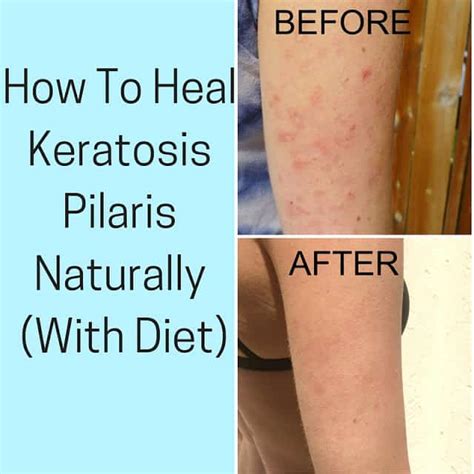How to Get Rid of Keratosis Pilaris (KP): A Comprehensive Guide
Keratosis pilaris (KP), also known as "chicken skin," is a common, harmless skin condition that appears as tiny, rough bumps on the skin. While there's no cure, there are many effective ways to manage and minimize the appearance of KP. This guide will explore various treatments and lifestyle changes to help you get rid of KP and achieve smoother, healthier skin.
Understanding Keratosis Pilaris (KP)
Before diving into treatments, it's important to understand what causes KP. KP occurs when keratin, a protein that protects your skin, builds up and forms plugs in your hair follicles. This leads to the characteristic small, rough bumps, often on the upper arms, thighs, cheeks, and buttocks. Genetics play a significant role, meaning it often runs in families. Other contributing factors include:
- Dry Skin: Dry skin exacerbates KP, making the bumps more noticeable and rough.
- Atopic Dermatitis (Eczema): Individuals with eczema are more prone to KP.
- Other Skin Conditions: Certain skin conditions can sometimes be associated with KP.
Effective Treatments for KP
Several methods can help improve the appearance of KP. Remember, consistency is key! It may take time to see significant results.
1. Exfoliation: The Cornerstone of KP Treatment
Regular exfoliation is crucial for removing the built-up keratin that causes KP bumps. Several methods are effective:
- Chemical Exfoliants: Products containing alpha-hydroxy acids (AHAs) like glycolic acid and lactic acid, or beta-hydroxy acids (BHAs) like salicylic acid, gently dissolve dead skin cells. Look for over-the-counter lotions and creams containing these ingredients.
- Physical Exfoliants: Gentle scrubs with fine particles can help remove dead skin cells. Avoid harsh scrubs that can irritate the skin. A soft loofah or washcloth can also be used during showering.
2. Moisturizing: Keeping Your Skin Hydrated
Hydrated skin is less prone to KP. Use a rich, thick moisturizer daily, especially after showering or bathing while your skin is still damp to lock in moisture. Look for moisturizers containing ingredients like:
- Ceramides: Help repair the skin barrier.
- Hyaluronic acid: Attracts and retains moisture.
- Shea butter: Provides intense hydration.
3. Topical Treatments: Targeting KP Directly
Certain topical treatments can help reduce the appearance of KP bumps. Consult a dermatologist for recommendations, as they can assess your specific skin type and needs. Some options include:
- Urea Creams: Help to break down and remove dead skin cells.
- Retinoids: These vitamin A derivatives can help unclog pores and reduce inflammation.
4. Lifestyle Changes for KP Management
Certain lifestyle changes can complement topical treatments and improve the overall appearance of your skin:
- Regular Showering/Bathing: Keep your skin clean, but avoid excessively hot water, which can dry out your skin.
- Humidifier Use: Especially helpful during dry winter months.
When to See a Dermatologist
While KP is generally harmless, it's essential to see a dermatologist if:
- Your KP is severe or worsening.
- You experience significant inflammation or pain.
- You're unsure about the best treatment options.
A dermatologist can diagnose your condition accurately and recommend the most suitable treatment plan based on your individual needs.
Conclusion: Achieving Smoother Skin with Patience and Consistency
Getting rid of KP requires patience and consistency. While complete eradication might not be possible, significant improvement is achievable through a combination of exfoliation, moisturization, and potentially topical treatments. Remember to listen to your skin and adjust your routine as needed. With a tailored approach and consistent effort, you can significantly reduce the appearance of KP and achieve smoother, healthier-looking skin.
